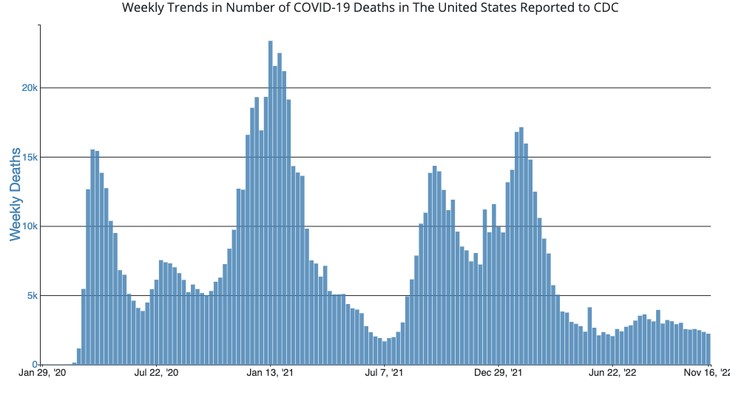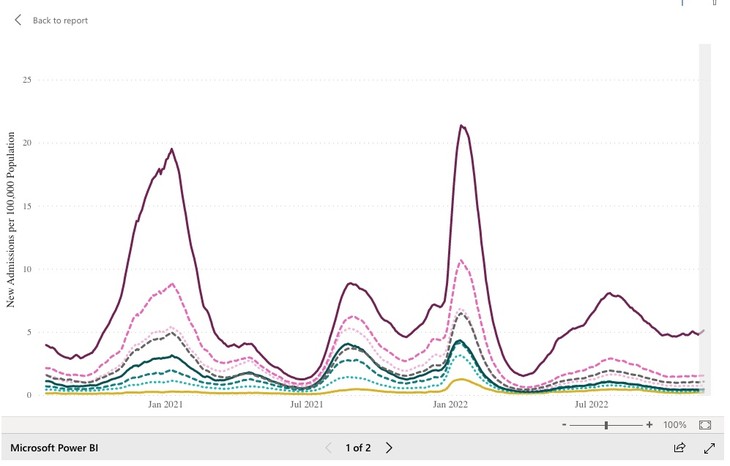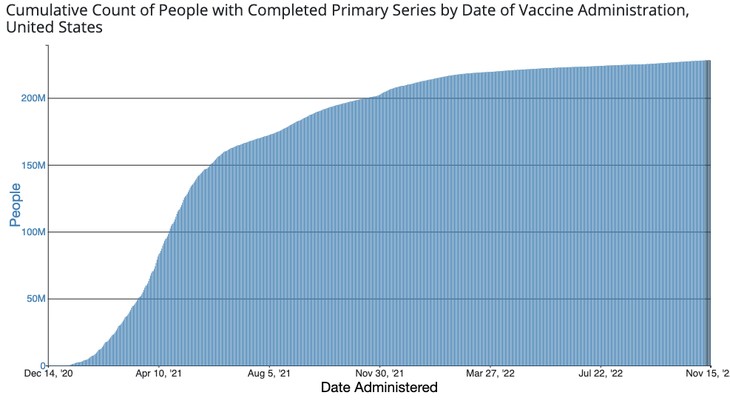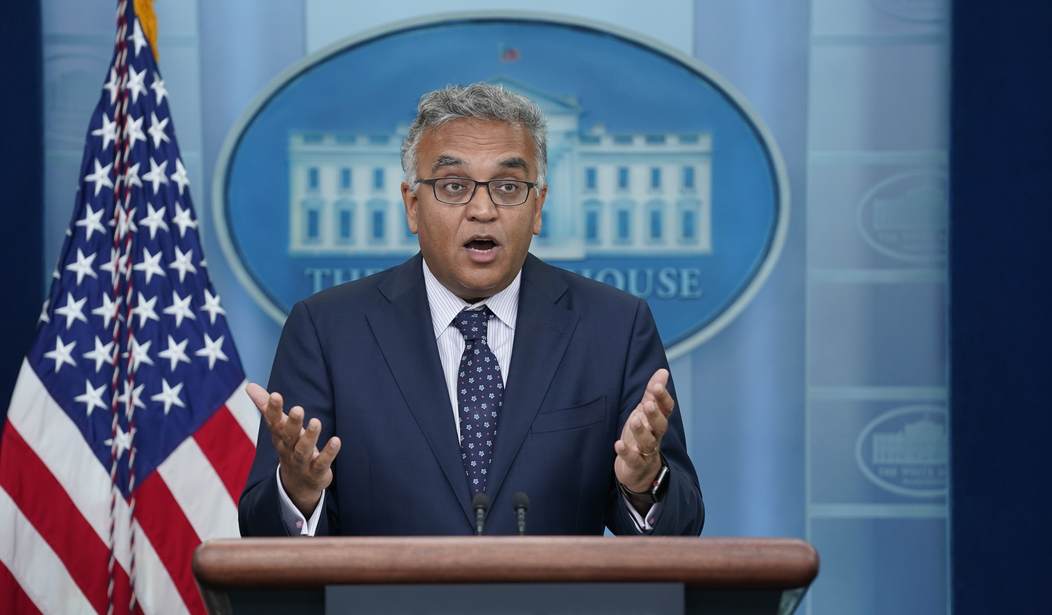“It’s no longer a pandemic of the unvaccinated,” Kaiser Family Foundation (KFF) VP Cynthia Cox told the Washington Post on Wednesday.
In truth, it hasn’t been solely a pandemic of the unvaccinated for more than a year. And the death statistics used by KFF and the Post are useless anyway, for other critical reasons that have everything to do with failure and manipulation at the CDC.
Let’s start with the initial claim from Cox, based on CDC data and KFF interpretation of it. The Post calls it a “continuation of a troubling trend” in deaths correlated to both COVID-19 and vaccination:
For the first time, a majority of Americans dying from the coronavirus received at least the primary series of the vaccine.
Fifty-eight percent of coronavirus deaths in August were people who were vaccinated or boosted, according to an analysis conducted for The Health 202 by Cynthia Cox, vice president at the Kaiser Family Foundation.
It’s a continuation of a troubling trend that has emerged over the past year. As vaccination rates have increased and new variants appeared, the share of deaths of people who were vaccinated has been steadily rising. In September 2021, vaccinated people made up just 23 percent of coronavirus fatalities. In January and February this year, it was up to 42 percent, per our colleagues Fenit Nirappil and Dan Keating.
The lesson that KFF and the Post draws is that ongoing vaccination is necessary:
Being unvaccinated is still a major risk factor for dying from covid-19. But efficacy wanes over time, and an analysis out last week from the Centers for Disease Control and Prevention highlights the need to get regular booster shots to keep one’s risk of death from the coronavirus low, especially for the elderly.
Perhaps that may be wise advice, especially for the elderly and immune suppressed. However, this position assumes several points not in evidence. One: Vaccination prevents uptake even in the short term. Two: Deaths overall are accelerating from waning vaccine efficacy. And the most important, three: The data on deaths (and hospitalizations) are limited to causative incidents — in other words, the deaths are caused by COVID-19 rather than merely correlated to a positive COVID-19 test.
Let’s work backwards through these points. Despite nearly three years of criticism over the issue of causation and correlation, the CDC still collects its COVID-19 reporting on the latter basis. Deaths and hospitalizations count in this metric even if they had nothing to do with an acute COVID case. Death in a car accident would get counted if the patient tested positive for the presence of COVID-19, for example. The Biden administration promised to revamp CDC reporting to limit for causation back in February, but they have yet to do so.
So it’s not surprising, therefore, that in a population where the vast majority of people are vaccinated, vaccinations are present in the majority of deaths. In fact, that’s so obvious that it almost moots an explanation. At the moment, 80.6% of the total US population and 91.6% of the adult population have been vaccinated. (The CDC estimates that 11.3% of Americans above 5 years of age have received boosters.) That didn’t happen all at once, of course, which is why the percentage of COVID-correlated deaths with vaccinations has been growing over the past year.
In other words, this doesn’t tell us much. If we had causative data, that would tell us much more — but those percentages would likely be much smaller, perhaps even infinitesimal.
How do we know this? We can look at CDC’s own data. If an increase of deaths are truly attributable to waning vaccination efficacy, we should expect to see large rises in both deaths and hospitalizations, especially while using correlative data.
Here’s the CDC’s own chart on correlative deaths:

And here is the CDC’s own chart on correlative new hospital admissions, broken out by age groups:

Note that the CDC itself reports no actual increase in the rate of deaths or hospitalizations in October, the period in which KFF and the Post focus. Correlated deaths and hospitalization admissions are actually declining slightly, and were declining through the same month as when KFF offered an alarmist take that vaccines are losing their efficacy. The only age group not at the baseline on admissions is the most elderly, and even that hasn’t spiked since the summer. And again, these are just correlated to a positive COVID-19 test, not confirmed seriously-acute cases of COVID-19.
The admissions data is particularly telling. If vaccine efficacy was truly an issue, we’d see rapidly increasing numbers of hospital admissions (both correlative and causative) as seriously acute cases started increasing. We’re not even seeing that among the elderly at the moment. There is no evidence, in other words, that vaccines are waning, and there is no evidence that we’re even seeing anything more at the moment than baseline COVID-19 activity in a population where it has become endemic.
This isn’t brain surgery — it’s simple statistics.
Let’s address the core claim in this report — that “it’s no longer a pandemic of the unvaccinated.” That hasn’t been true for a long while anyway, as the charts above show. As this next CDC chart shows, we vaccinated nearly the entire adult population by Thanksgiving of last year:

Compare this graphic with the correlative-death chart from the CDC above. It’s particularly telling that the Delta spike arrived just as we were achieving near-universality on base vaccinations but didn’t have a correlated hospitalization spike. The Omicron spike, which followed on its heels, did have a correlated hospitalization spike, but both variants were also a lot more transmissible than the original version of the virus. All that meant is that Omicron spread widely even in a vaccinated population, so widely that it spiked briefly among correlated hospital intakes but had much less acute impact than the original virus. (Don’t take my word for it — Anthony Fauci made the same point when the Omicron variant created a spike in reports of COVID-correlated pediatric hospital admissions eleven months ago.)
Did the “pandemic” disappear? No, and for one simple reason: the current vaccines and boosters neither prevent uptake nor transmission of COVID-19. They clearly do help alleviate the onset of seriously acute COVID-19 cases, as even the correlative data shows in hospital admissions, but they don’t prevent them entirely. The “pandemic of the unvaccinated” claim has been exposed as a fallacy for months now, and only continues because people use it to claim a necessity for vaccination mandates to prevent community transmission — which the vaccines don’t prevent at all. If they did, COVID-19 would have rapidly disappeared months ago.
That doesn’t make the vaccines valueless, of course. Preventing seriously acute cases matters both individually and in communities, and to the extent that the vaccinations gave bodies an ability to get an instant immune response to COVID-19, they were a very good development. I’m still pro-vaccine, but I’m also realistic about their limits too.
In fact, vaccinations on this scale ended the pandemic phase of COVID-19. It is now an endemic virus, one which will require monitoring and management in ways similar to the flu, among the vaccinated and unvaccinated alike. The CDC’s own data show this, and also expose attempts to instill fear and panic for what they are — ways to keep a grasp on emergency powers that should have ended long ago. Let’s stop with the panic and start demanding yet again that the CDC and the Department of Health and Human Services narrow down their reporting to causative cases only when monitoring COVID-19 and any other novel infectious agent that may emerge in the future.







